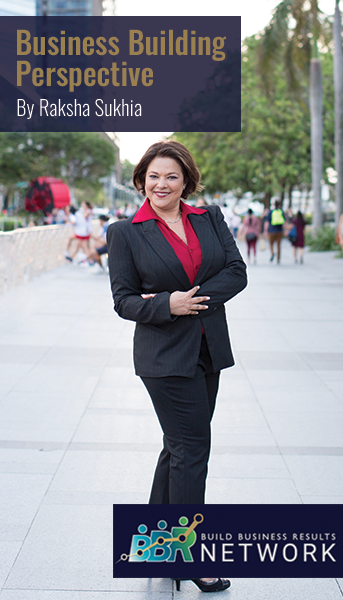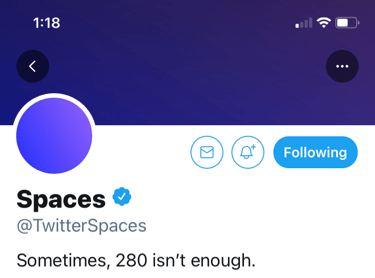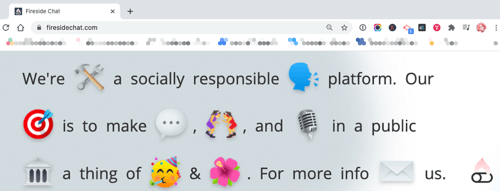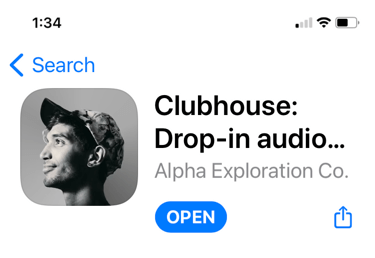Social Audio: What It Means for Marketers and Businesses

If you were familiar with Party Lines four decades ago, you remember how friends and strangers could dial up to audio-based conversations regardless of location. In 2021, instead of landline phones, quarantine-limited users are downloading apps for real-time conversations with friends and family.
The visual interfaces may vary, from emoticons to text chat integration to avatar integration. Modern app versions contain social graphs, groups, and other social networking features you find in popular tools like Facebook, Messenger, WhatsApp, etc.
Know more about Social audio by reading the full article.
See you on the action-field,
Raksha Sukhia, SMB Growth Expert,
Founder BBR Network. #bbrnetwork
Wondering what social audio is and how it might impact your business? Is Clubhouse ushering in a new media frontier?
In this article, you’ll learn what marketers need to know about emerging social audio opportunities such as Clubhouse, Twitter Spaces, and Fireside.
What Is Social Audio?
Social media—traditionally seen as text, emojis, and videos—has a new component: social audio.
While podcast audio has been around for some time, it’s a one-way broadcast medium, meaning it’s recorded for listening in the future. Social audio differs in that it’s real-time audio that allows listeners to actively participate in the dialog.
Social audio is especially effective and important because it provides a depth of contextual understanding that isn’t supported by text. For example, when you hear someone’s voice, your understanding of what they’re saying is influenced by their intonation.
While this contextual understanding is also supported in real-time video conversations on platforms such as Zoom, appearing on video means you have to pay attention to the way you look, your background, and other factors.
Social audio is voice-only so there’s no need to worry about how you look or what’s in your background. It’s basically a Goldilocks medium; not too much, not too little… just right.


In his recent article, Jeremiah lists 26+ companies or platforms that qualify as social audio. Leading that list are Clubhouse, Spaces on Twitter, Fireside, Sonar, Chalk, Discord, and Locker Room.
Social Audio User Adoption
Jeremiah estimates that Clubhouse currently has approximately 10 million registered users and the average user session lasts approximately 90 minutes.
Over the next 12-18 months, we’ll see continued adoption growth with social audio in general (Clubhouse, Fireside, Twitter Spaces). Toward summer, Jeremiah notes he expects to see a pullback of around 30% in adoption as more people get their vaccines. That said, many people will remain working from home and Jeremiah forecasts a continued rise in adoption over the long term.

Social Audio for Business and Marketing: What’s Different?
For businesses that want to integrate social audio into their marketing and customer care, there aren’t many differences between channels like Clubhouse and other social media channels. Companies need trained spokespersons who can present, communicate, dialog, and listen with empathy.
The difference with social audio is that these spokespersons now need to be good conversationalists as well.
You can’t copy and paste from a press release or comms doc when you’re participating in a live audio conversation. In the same vein, executives will find that the scripted buzzword boilerplate and responses that work on text-based social media channels won’t resonate within social audio. People consuming and participating in social audio want authentic, human dialog.
Social Audio for Live, Online Events
Social audio has the potential to make a deep impact in the live online event space. Especially if Clubhouse follows through on delivering segmented or sponsored hallways.
Currently, many live online events are using live video conferencing to connect participants with each other. Imagine a Clubhouse hallway (think conference area) devoted to a live event, from which participants could enter any number of rooms (think topic-based, birds-of-a-feather tables) to have casual business conversations that match their needs or interests.
AI could be layered in to determine who’s influential, conversation spread and sentiment, impressions by who’s in the room, and audio engagement rates.
Social Audio Features to Watch for
The rapid development of social audio channels from established social media platforms such as Facebook and Twitter leads Jeremiah to believe that social audio is here to stay.
Further, he predicts that in 5 years, social audio channels won’t be stand-alone products; they’ll be integrated and viewed as simply one more tool in the communications tool chest.
For example, Clubhouse recently launched the ability to share a link to a Clubhouse room on Twitter. As social audio begins to bleed into other traditional social networking tools, Jeremiah expects some related enhancements to emerge.
Here are a few things to watch for:
The addition of text-based features and emoticons.
The ability to record selected social audio conversations and publish them like a podcast. Rather than rolling out the ability to record all conversations, Jeremiah believes platforms will allow the recording of some conversations but not others. This will let platforms honor the privacy of people who want to have a casual, real conversation while allowing people who want to produce more show-type content to record their conversations.
The integration of blockchain and cryptocurrency so people can monetize social audio, possibly with their own branded crypto coins.
Premium audio experiences such as background noise removal and noise cancellation are also on the horizon, as well as stereo sound and spatial audio that mimics the way people hear in each ear when they turn their heads.
Finally, as social audio evolves, Jeremiah believes it will ultimately move away from limiting conversations to the app. In 5 years, these conversations and the faces of those speaking will likely be embedded on your website. For example, if you have an article about modern email newsletter best practices, that page could include a button that allows readers to take part in a live conversation featuring you and the experts—right then and there.
Business Model Ideas to Leverage Social Audio
Jeremiah has identified more than 15 different social audio business models across three major groups. Here are some examples:
In a user-based business model, customers would pay to access premium features such as premium audio experiences or they would be able to tip creators for the content they produce.
Marketing or advertising business models would leverage paid visibility by selling sponsorships for branded clubs and emoticons, banner ads, and promoted rooms in the hallway.
In a data monetization business model, users’ data would be sold to advertisers or the government, or access to the platform’s API could be sold to app developers who then build apps on top of Clubhouse or Twitter Spaces.
Source: Michael Stelzner, Social Media Examiner
SignUp for Weekly Ezine

Related Article
What’s a Good Landing Page Conversion Rate?
Business Agility Is the New Norm. Do You Have What It Takes?
Tags
#BBR, #BBR Network, #LinkedIn #Social Media Marketing, #Profitability, #Small Business Growth, #Small Business Marketing and Sales, #SMB, #SME, Build Business Results, Build Business Results (BBR) Network, Elizabeth Johnson, IGNITE Business Accelerator Program, Linked Sellling, LinkedIn Marketing, LinkedIn Marketing Insights, Raksha Sukhia, Small Business










